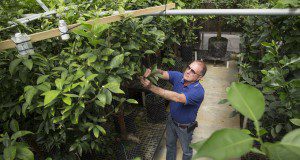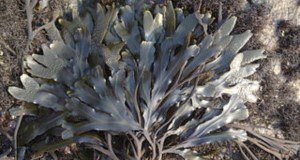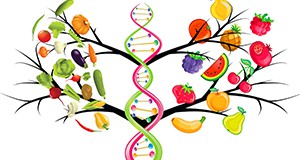This 5-page document provides guidance on the appropriate use of unmanned aerial vehicles (UAVs) for agricultural applications in Florida. It contains step-by-step instructions for preparing a UAV for flight, creating a mission path (using flight mission planning apps), and collecting UAV-based data. Written by Sri Charan Kakarla, Leon De Morais Nunes, and Yiannis Ampatzidis, and published by the UF/IFAS Department of Agricultural and Biological Engineering, November 2019.
http://edis.ifas.ufl.edu/ae535
Tag: Southwest Florida REC
Seed and Budwood Production, Transport, and Conservation
The Florida citrus industry maintains a high demand for trees for replanting and resetting, as well as an interest in new releases of rootstocks and scions with improved disease and abiotic stress tolerances. One of the main constraints for liner production in great numbers is time. The consensus among citrus nurseries is that it takes two years to produce enough quantities of budwood to establish seed block trees when a new interesting rootstock is produced. This new 3-page article addresses the practices and challenges of producing seeds and budwood in Florida. This article, chapter 7 of the forthcoming Citrus Nursery Production Guide, was written by Fernando Alferez and Mireia Bordas and is a publication of the UF/IFAS Horticultural Sciences Department.
https://edis.ifas.ufl.edu/hs1336
Plant Biostimulants: Definition and Overview of Categories and Effects
This new 4-page article provides an overview of a group of crop production materials termed “plant biostimulants,” which are frequently promoted as environment-friendly alternatives to chemical-based products. It explains their regulatory status and presents an overview of the most popular materials (e.g., beneficial fungi, seaweeds, and silicon) and their effects on plants. Written by Ute Albrecht and published by the UF/IFAS Horticultural Sciences Department.
http://edis.ifas.ufl.edu/hs1330
Facility Registration and Initial Regulatory Compliance Activities for Acidified Food and Low-Acid Canned Food Processors in Florida
Food businesses are subject to a wide range of regulatory requirements. Food entrepreneurs who want to produce and sell acidified foods or low-acid canned foods must abide by specific FDA regulations. This new 3-page document intends to clarify the initial steps food entrepreneurs must implement to comply with these regulations. This factsheet is one in a Food Entrepreneurship in Florida series, which assists beginning and established food entrepreneurs by providing them information on topics highly relevant to starting and running a food business: regulations, safety, labeling, processing, and marketing. Written by Matthew Krug and Soohyoun Ahn, and published by the UF/IFAS Food Science and Human Nutrition Department, February 2019.
http://edis.ifas.ufl.edu/fs318
Determination of Carbonate Concentrations in Calcareous Soils with Common Vinegar Test
When raising crops on calcareous soils, growers need to know how much calcium carbonate is in the soil before they can employ any management practices. Growers can test the level of carbonate in their soils using store-bought vinegar and other household supplies. This 3-page fact sheet explains the chemistry behind the vinegar test and instructions for performing the test and interpreting the results. Written by Qiang Zhu, Monica Ozores-Hampton, and Yuncong Li, and published by the UF Department of Horticultural Sciences, June 2015.
http://edis.ifas.ufl.edu/hs1262
Spotted Wing Drosophila Drosophila suzukii Identification, Ecology, and Management
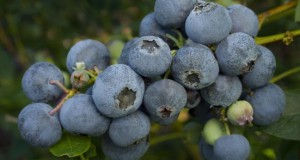 Spotted wing drosophila (SWD) is a tiny invasive fruit fly pest of small fruits. It has been found infesting fruits in Europe and North and South America. Since its first capture in California in 2008, SWD has established populations throughout the United States in over 47 states. This trifold brochure written by Lindsy Iglesias, Teresia W. Nyoike, and Oscar E. Liburd and published by the Entomology and Nematology Department describes how to identify and monitor these tiny pests and explains a few strategies to control them and limit the damage they cause to fruit crops.
Spotted wing drosophila (SWD) is a tiny invasive fruit fly pest of small fruits. It has been found infesting fruits in Europe and North and South America. Since its first capture in California in 2008, SWD has established populations throughout the United States in over 47 states. This trifold brochure written by Lindsy Iglesias, Teresia W. Nyoike, and Oscar E. Liburd and published by the Entomology and Nematology Department describes how to identify and monitor these tiny pests and explains a few strategies to control them and limit the damage they cause to fruit crops.
http://edis.ifas.ufl.edu/in1098
Plant Diagnostic Clinic and HLB Lab
The Plant Pathology program at the UF/IFAS Southwest Research and Education Center is the state and local resource for plant diagnostic services, including HLB (Huanglongbing, or citrus greening) detection, and for insect identification. This brochure covers the center’s history, instructions for sending samples to the HLB lab, answers to frequently asked questions, and center hours and contact information. Written by Pamela Roberts, Shea Teems, Joubert Fayette, and Jamie Burrow, and published by the UF Department of Plant Pathology, July 2015.
http://edis.ifas.ufl.edu/pp319
Hand Pollination of Tomato for Breeding and Seed Production
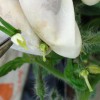 Hand pollination is a technique that is used for breeding new tomato varieties with desirable characteristics such as plant vigor, disease resistance, and uniform fruit quality and plant growth; since tomatoes have complete flowers and are self-pollinated, it usually is unnecessary to hand pollinate the flowers for fruit production. This 4-page guide illustrates selection and emasculation of flowers from the plant receiving pollen, pollen collection and drying, and pollination of the stigma. Written by Monica Ozores-Hampton, and published by the UF Department of Horticultural Sciences, August 2014. (Photo credit: Monica Ozores-Hampton)
Hand pollination is a technique that is used for breeding new tomato varieties with desirable characteristics such as plant vigor, disease resistance, and uniform fruit quality and plant growth; since tomatoes have complete flowers and are self-pollinated, it usually is unnecessary to hand pollinate the flowers for fruit production. This 4-page guide illustrates selection and emasculation of flowers from the plant receiving pollen, pollen collection and drying, and pollination of the stigma. Written by Monica Ozores-Hampton, and published by the UF Department of Horticultural Sciences, August 2014. (Photo credit: Monica Ozores-Hampton)
http://edis.ifas.ufl.edu/hs1248
Description of Enhanced-Efficiency Fertilizers for Use in Vegetable Production
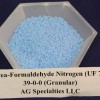 In response to the Federal Clean Water Act of 1972 and the Florida Restoration Act of 1999, a series of best management practices (BMPs) was implemented to improve surface and ground water quality. BMPs are cultural practices that, when implemented as a plan, help reduce the environmental impact of production while maintaining yield and quality. One of these BMPs includes the use of controlled-release fertilizer, which is an enhanced-efficiency fertilizer. This publication describes the common enhanced-efficiency fertilizers and the factors affecting their use in Florida vegetable production. This 9-page fact sheet was written by Luther Carson and Monica Ozores-Hampton, and published by the UF Department of Horticultural Sciences, October 2014.
In response to the Federal Clean Water Act of 1972 and the Florida Restoration Act of 1999, a series of best management practices (BMPs) was implemented to improve surface and ground water quality. BMPs are cultural practices that, when implemented as a plan, help reduce the environmental impact of production while maintaining yield and quality. One of these BMPs includes the use of controlled-release fertilizer, which is an enhanced-efficiency fertilizer. This publication describes the common enhanced-efficiency fertilizers and the factors affecting their use in Florida vegetable production. This 9-page fact sheet was written by Luther Carson and Monica Ozores-Hampton, and published by the UF Department of Horticultural Sciences, October 2014.
http://edis.ifas.ufl.edu/hs1247
Water and Nitrogen BMPs for Tomato and Watermelon: Water Quality and Economics
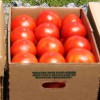 Results of a two-year, four-crop-cycles experiment indicated that the recommended Best Management Practice (BMP) water and fertilizer nitrogen (N) rates for seepage-irrigated tomato in south Florida can reduce water use and N leaching to groundwater without adversely impacting yield. The same is true for watermelon for average rainfall conditions. This 5-page fact sheet was written by Sanjay Shukla, Gregory S. Hendricks, Fritz M. Roka, and Thomas A. Obreza, and published by the UF Department of Agricultural and Biological Engineering, May 2014.
Results of a two-year, four-crop-cycles experiment indicated that the recommended Best Management Practice (BMP) water and fertilizer nitrogen (N) rates for seepage-irrigated tomato in south Florida can reduce water use and N leaching to groundwater without adversely impacting yield. The same is true for watermelon for average rainfall conditions. This 5-page fact sheet was written by Sanjay Shukla, Gregory S. Hendricks, Fritz M. Roka, and Thomas A. Obreza, and published by the UF Department of Agricultural and Biological Engineering, May 2014.
http://edis.ifas.ufl.edu/ae503
Comparison of Soil Test Extractants for Available Soil Phosphorus in High pH Sandy Soils of South Florida
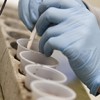 This document addresses the selection of soil nutrient extractants in high pH soils and discusses their relationship to both nutrition and fertilizer management. This document’s objective is to describe the impact of selected soil extractants on nutrient management and their ability to determine soil phosphorus availability. The target audience for this series dealing with citrus nutrition includes Certified Crop Advisers; citrus, vegetable, and sugarcane producers; fertilizer dealers; and other parties interested in crop fertilization practices. This 4-page fact sheet was written by Kelly T. Morgan and Kamal Mahmoud, and published by the UF Department of Soil and Water Science, December 2014.
This document addresses the selection of soil nutrient extractants in high pH soils and discusses their relationship to both nutrition and fertilizer management. This document’s objective is to describe the impact of selected soil extractants on nutrient management and their ability to determine soil phosphorus availability. The target audience for this series dealing with citrus nutrition includes Certified Crop Advisers; citrus, vegetable, and sugarcane producers; fertilizer dealers; and other parties interested in crop fertilization practices. This 4-page fact sheet was written by Kelly T. Morgan and Kamal Mahmoud, and published by the UF Department of Soil and Water Science, December 2014.
http://edis.ifas.ufl.edu/ss613
Cattle Fencing BMP Can Reduce Phosphorus Loads from Florida Ranches
 BMPs are an important tool in helping the state and individual landowners protect and enhance state’s waters. Given the water quality issues facing Lake Okeechobee and other sensitive water bodies, the importance of BMP implementation has increased since their official establishment as part of the FWRA. In order to ensure that BMPs are reducing nutrient loadings, on-farm research is needed to verify BMP effectiveness. A four-year study was conducted to evaluate the effectiveness of the cow/calf stream fencing BMP. The study concluded that the BMP did reduce the amount of P being discharged from the ranch. This BMP should continue to be included in the cow/calf BMP manual, and, hopefully, its widespread implementation will help the state in meeting its TMDLs. This 3-page fact sheet was written by Sanjay Shukla, Wendy D. Graham, Alan Hodges, and James M. Knowles, and published by the UF Department of Agricultural and Biological Engineering, May 2014.
BMPs are an important tool in helping the state and individual landowners protect and enhance state’s waters. Given the water quality issues facing Lake Okeechobee and other sensitive water bodies, the importance of BMP implementation has increased since their official establishment as part of the FWRA. In order to ensure that BMPs are reducing nutrient loadings, on-farm research is needed to verify BMP effectiveness. A four-year study was conducted to evaluate the effectiveness of the cow/calf stream fencing BMP. The study concluded that the BMP did reduce the amount of P being discharged from the ranch. This BMP should continue to be included in the cow/calf BMP manual, and, hopefully, its widespread implementation will help the state in meeting its TMDLs. This 3-page fact sheet was written by Sanjay Shukla, Wendy D. Graham, Alan Hodges, and James M. Knowles, and published by the UF Department of Agricultural and Biological Engineering, May 2014.
http://edis.ifas.ufl.edu/ae501
Effect of Reduced Soil pH with Sulfur on Available Soil Phosphorus in High pH Sandy Soils of South Florida
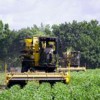 This 3-page fact sheet addresses the effect of moderating soil pH by using sulfur amendments in high pH soils and discusses their relationship to both nutrition and fertilizer management. Written by Kelly T. Morgan and Kamal Mahmoud, and published by the UF Department of Soil and Water Science, December 2013.
This 3-page fact sheet addresses the effect of moderating soil pH by using sulfur amendments in high pH soils and discusses their relationship to both nutrition and fertilizer management. Written by Kelly T. Morgan and Kamal Mahmoud, and published by the UF Department of Soil and Water Science, December 2013.
http://edis.ifas.ufl.edu/ss612
Measuring Productivity of Citrus Hand Harvesters and Assessing Implications on Harvest Costs and Mechanical Harvesting Developments (FE933)
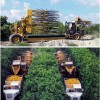 Existing mechanical harvesters recover 70 to 95 percent of the available fruit crop. While changes can be made to increase fruit recovery percentages, mechanical systems will never equal the fruit recovery percentages from hand-harvesting crews, much less capture 100 percent of the available fruit. Whether or not to glean (to use manual labor to collect fruit not harvested by the machine) will remain an important question that growers will have to face with every block they choose to mechanically harvest. This study incorporated field harvesting data and developed a model that predicted the extent to which labor productivity would be affected by decreasing the number of oranges available for harvesting by manual labor. Given current market prices of fruit, recovery percentage of crops harvested using mechanical harvesting equipment can improve up to 99 percent and gleaning will remain a profitable activity.
Existing mechanical harvesters recover 70 to 95 percent of the available fruit crop. While changes can be made to increase fruit recovery percentages, mechanical systems will never equal the fruit recovery percentages from hand-harvesting crews, much less capture 100 percent of the available fruit. Whether or not to glean (to use manual labor to collect fruit not harvested by the machine) will remain an important question that growers will have to face with every block they choose to mechanically harvest. This study incorporated field harvesting data and developed a model that predicted the extent to which labor productivity would be affected by decreasing the number of oranges available for harvesting by manual labor. Given current market prices of fruit, recovery percentage of crops harvested using mechanical harvesting equipment can improve up to 99 percent and gleaning will remain a profitable activity.
This 6-page fact sheet was written by Fritz M. Roka and Barbara R. Hyman, and published by the UF Department of Food and Resource Economics, May 2013.
http://edis.ifas.ufl.edu/fe933
Florida Reclaimed Phosphate Mine Soils: Characteristics, Potential Uses, and Management Considerations (SL370/SS571)
 A critical nutrient for plant growth, phosphate helps sustain the world’s growing population. In 2010, seven mines in Florida produced approximately 10% of the world’s phosphate supply and more than 65% of the phosphate for the United States. But each year in Florida thousands of acres disturbed by strip-mining for phosphate rock must be reclaimed for other productive uses. This 11-page fact sheet provides a general characterization of the various soil types resulting from phosphate mine reclamation. Written by M. Wilson and E.A. Hanlon, and published by the UF Department of Soil and Water Science, October 2012.
A critical nutrient for plant growth, phosphate helps sustain the world’s growing population. In 2010, seven mines in Florida produced approximately 10% of the world’s phosphate supply and more than 65% of the phosphate for the United States. But each year in Florida thousands of acres disturbed by strip-mining for phosphate rock must be reclaimed for other productive uses. This 11-page fact sheet provides a general characterization of the various soil types resulting from phosphate mine reclamation. Written by M. Wilson and E.A. Hanlon, and published by the UF Department of Soil and Water Science, October 2012.
http://edis.ifas.ufl.edu/ss571
Blossom Drop, Reduced Fruit Set, and Post-Pollination Disorders in Tomato (HS1195)
 Blossom drop and reduced fruit set in tomato can seriously impact yields. Growers in Florida routinely experience such problems and inquire about the cause and possible preventative measures to reduce flower loss and improve yields. The problem can be frustrating and difficult to manage in some situations. This 6-page fact sheet was written by Monica Ozores-Hampton, Fnu Kiran, and Gene McAvoy, and published by the UF Department of Horticultural Sciences, July 2012.
Blossom drop and reduced fruit set in tomato can seriously impact yields. Growers in Florida routinely experience such problems and inquire about the cause and possible preventative measures to reduce flower loss and improve yields. The problem can be frustrating and difficult to manage in some situations. This 6-page fact sheet was written by Monica Ozores-Hampton, Fnu Kiran, and Gene McAvoy, and published by the UF Department of Horticultural Sciences, July 2012.
http://edis.ifas.ufl.edu/hs1195
Landscape Diversity: Florida Phosphate Mine Pit Lakes (SL364/SS565)
 This 8-page fact sheet contains a synopsis of findings obtained through research, contrasted with limnological studies of natural lakes in central Florida. Written by M. Wilson and E.A. Hanlon, and published by the UF Department of Soil and Water Science, May 2012.
This 8-page fact sheet contains a synopsis of findings obtained through research, contrasted with limnological studies of natural lakes in central Florida. Written by M. Wilson and E.A. Hanlon, and published by the UF Department of Soil and Water Science, May 2012.
http://edis.ifas.ufl.edu/ss565
Jatropha: An Alternative Substitute to Fossil Fuel (HS1193)
 Jatropha is a tropical plant and can be grown in low to high rainfall and diverse soil types, but the plant is susceptible to freezes. The plant produces seeds containing inedible oil that can be converted to biodiesel. The cake by-product from oil extraction can be used for fish and animal feed, biogas, or as an organic fertilizer. This 10-page fact sheet describes the plant morphology, species adaptability, cultural practices, and crop uses. Written by Kamrun Nahar and Monica Ozores-Hampton, and published by the UF Department of Horticultural Sciences, December 2011. (UF/IFAS Photo by Tyler Jones)
Jatropha is a tropical plant and can be grown in low to high rainfall and diverse soil types, but the plant is susceptible to freezes. The plant produces seeds containing inedible oil that can be converted to biodiesel. The cake by-product from oil extraction can be used for fish and animal feed, biogas, or as an organic fertilizer. This 10-page fact sheet describes the plant morphology, species adaptability, cultural practices, and crop uses. Written by Kamrun Nahar and Monica Ozores-Hampton, and published by the UF Department of Horticultural Sciences, December 2011. (UF/IFAS Photo by Tyler Jones)
http://edis.ifas.ufl.edu/hs1193
Tomato Varieties for Florida: Florida ‘Red Rounds,’ Plum, Cherries, and Grapes (HS1189)
Tomatoes were introduced to European culture more than a hundred years before Linnaeus developed the binomial system of naming plants. After a brief discussion of the scientific naming of tomato and tomato varieties, the tables in this 13-page fact sheet provide a guide to varieties used in Florida listing the companies selling each, growing season, characteristics of plant and fruit, disease resistance, and other comments, separated by regional adaptation. Written by Monica Ozores-Hampton, Gene McAvoy, Stephen Olson, Kent Cushman, and Nancy Roe , and published by the UF Department of Horticultural Sciences, March 2011.
http://edis.ifas.ufl.edu/hs1189
HS1187 Introducción a la Tecnología de Injertos a la Industria de Tomate en la Florida: Beneficios Potenciales y Retos
HS1187, a 7-page illustrated fact sheet by Monica Ozores-Hampton, Xin Zhao, y Miriam Ortez, describes benefits and risks of using grafting technology in tomato production. Includes references. Published by the UF Department of Horticultural Sciences, December 2010.
http://edis.ifas.ufl.edu/hs1187

